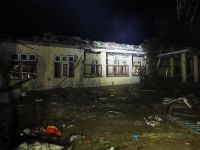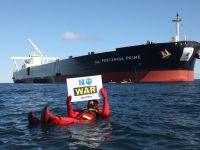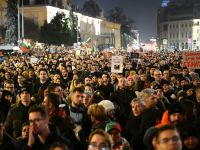Malaysia is important to world energy markets because of its 81.7 trillion cubic feet of natural gas reserves and its net oil exports of over 300,000 barrels per day.
Note: All information contained in this report is the best available as of May 2000 and is subject to change.
General Background:
Malaysia is currently in the second year of a strong recovery from the effects of the Asian financial crisis of 1997-98. Following a 7.5 percent decline in real gross domestic product (GDP) in 1998, Malaysia experienced real GDP growth of 5.4 percent in 1999. Real GDP growth for 2000 is projected at 5.8 percent.
Strong demand for exports of Malaysian consumer goods, particularly electronics, and the recovery in oil prices in late 1999 and early 2000 have helped fuel the country's recovery. Oil and gas production accounts for over 8 percent of Malaysia's total GDP.
Malaysia's banking system has been stabilized, after being undermined by a high proportion of nonperforming loans during the financial crisis. The country's government is pressing banks to merge into larger entities, which is to be completed by December 2000.
Malaysia has maintained its policy of a fixed exchange rate between the ringgit and the U.S. dollar, which was imposed by Prime Minister Mahathir in September 1998, as part of capital controls designed to stem the outflow of short-term capital in the wake of the Asian financial crisis.
Malaysian currency is considered somewhat undervalued at the present exchange rate of 3.8 ringgit to one U.S. dollar.
Oil:
Malaysia contains proven oil reserves of 3.9 billion barrels, down from 4.3 billion barrels in 1996. Despite this trend toward declining oil reserves (due to lack of significant new discoveries in recent years), Malaysia's crude oil production has been stable in recent years, fluctuating in the range between 690,000 barrels per day (bbl/d) and 730,000 bbl/d between 1996 and early 2000.
In 1999, crude oil production averaged 720,000 bbl/d. After a pause during the Asian financial crisis, Malaysia's domestic petroleum product consumption is again growing.
As a result of declining oil reserves, Petronas, the state oil and gas company, has embarked on an international exploration and production strategy.
Currently, Petronas is invested in oil exploration and production projects in Syria, Turkmenistan, Iran, Pakistan, China, Vietnam, Burma, Algeria, Libya, Tunisia, Sudan, and Angola. In 1999, Malaysia exported the majority of its oil to markets in Japan, Thailand, South Korea, and Singapore.
Malaysia's domestic oil production occurs offshore and primarily near Peninsular Malaysia. Most of the country's oil fields contain low sulfur, high quality crude, with gravities in the 35o-50o API range.
Over half of the country's oil production comes from the Tapis field, which contains 44o API oil with 0.2 percent sulfur content. Esso Production Malaysia Inc. (EPMI), an affiliate of ExxonMobil Corporation, is the largest crude oil producer in Peninsular Malaysia, accounting for nearly half of Malaysia's crude oil production.
EPMI operates seven fields near the peninsula, and one-third of its production comes from the Seligi field. The Seligi-F platform, with its 28 wells, is the newest satellite in the Seligi field, located 165 miles off the coast of Terengganu, Peninsular Malaysia.
Built at a cost of $155 million, Seligi-F is the seventh production platform on the Seligi field. The platform came on stream in March 1998 and is expected to produce an annual average of 21,000 bbl/d.
EPMI holds a 78 percent interest in the project with Petronas Carigali holding the remaining 22 percent. In addition, EPMI began drilling the nearby Raya-A platform in the second quarter 1998. EPMI has invested $96 million in six wells, and holds an 80 percent interest with Petronas Carigali holding the remaining 20 percent.
In other developments, Sabah Shell Petroleum Company, a unit of Royal Dutch/Shell Group, raised production at the Kinabalu field to 36,000 bbl/d, as well as 28 million cubic feet per day (Mmcf/d) of gas.
Production at Kinabalu, located in the SB-1 block 34 miles off the coast of Labuan, Sabah in east Malaysia, began in December 1997. Peak production is expected to reach 40,000 bbl/d of oil and 30 Mmcf/d of gas.
As operator of the SB-1 block, Shell holds an 80 percent stake in the block, with Petronas holding a 20 percent stake.
In February 1998, Amerada Hess signed two, five-year production sharing contracts (PSCs) with Petronas for blocks PM304 and SK306. The PSCs commit Amerada to $24.9 million of exploration activities on the two blocks.
Amerada drilled five exploratory wells in 1999 following a series of 2-D and 3-D seismic studies. Under the PSCs, Amerada holds a 70 percent stake in PM304, offshore Terengganu, and an 80 percent stake in SK 306, offshore Sarawak, with Petronas holding the remaining interests in both blocks.
In February 2000, Sweden's Lundin Oil announced that it had signed a sales agreement with Petronas and PetroVietnam which will allow it to proceed with development of its long-delayed Bunga Kekwa project.
Production is scheduled to begin in 2003, with an expected volume of 40,000 bbl/d of liquids and 250 Mmcf/d of gas. Lundin Oil is the operator of the field, and Petronas and Petrovietnam hold equity stakes in the project.
Refining & Downstream:
Malaysia has six refineries with a total processing capacity of 524,400 bbl/d. The three largest are the 155,000 bbl/d Shell Port Dickson refinery and thePetronas Melaka-I and 100,000 bbl/d Melaka-II refineries, which each have a capacity of 100,000 bbl/d.
The second phase of the $1.4-billion, 200,000-bbl/d Melaka refinery complex, located about 90 miles south of Kuala Lumpur, commenced operation in August 1998. The 100,000-bbl/d Melaka-II second phase is a joint venture between Petronas (45 percent), Conoco (40 percent), and Statoil (15 percent).
This second refinery contains a 62,000-bbl/d vacuum distillation unit, 26,000-bbl/d catalytic cracker, 28,500-bbl/d hydrocracker, 35,000-bbl/d desulfurization unit, and 21,000-bbl/d coker.
One of the main purposes of this refinery is to supply gasoline to Conoco's service stations in Thailand and a new line of stations planned for Malaysia.
The first phase of the Melaka refinery was finished in mid-1994 and consisted of a 100,000 bbl/d sweet crude distillation unit, which is wholly-owned by Petronas and processes Tapis crude oil.
Petronas, in a joint venture with Conoco and Statoil began construction of a 7,500 bbl/d lubricants plant at Melaka in 1998. Petronas and its partners began construction on the $250 million plant in March 1998, and it is scheduled to come on line in 2002.
In other downstream activities, Petronas signed a joint venture agreement with Union Carbide Company, in April 1998, to build a petrochemical complex in Kertih on the east coast of Peninsular Malaysia. Construction of the complex is estimated to cost $3-$4 billion and to involve three separate projects.
The centerpiece of the joint venture is an olefins cracker unit with an annual production capacity of 600,000 metric tons of ethylene and 85,000 metric tons of propylene.
Petronas will hold a 76 percent stake and Union Carbide will hold a 24 percent stake in this unit, which is expected to be complete by the first quarter 2001.
Both companies will hold equal shares in the ethylene oxide/ethylene glycol plant with an annual capacity of 320,000 metric tons and the multi-unit derivatives plant.
The derivatives plant will produce amines and ethyloxates, glycol ethers, butyl acetate, and butanol.
Source: United States Energy Information Administration
© 2000 Mena Report (www.menareport.com)







